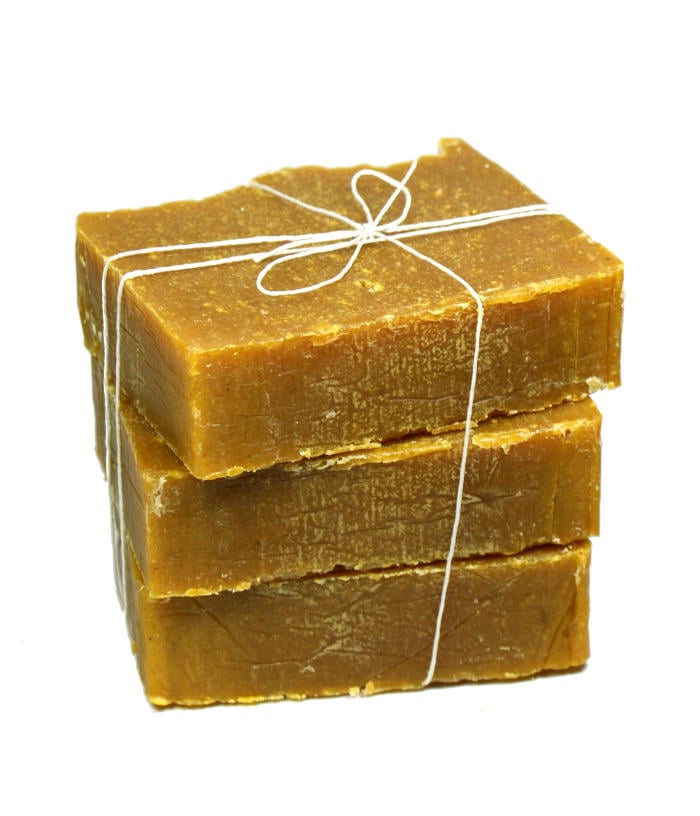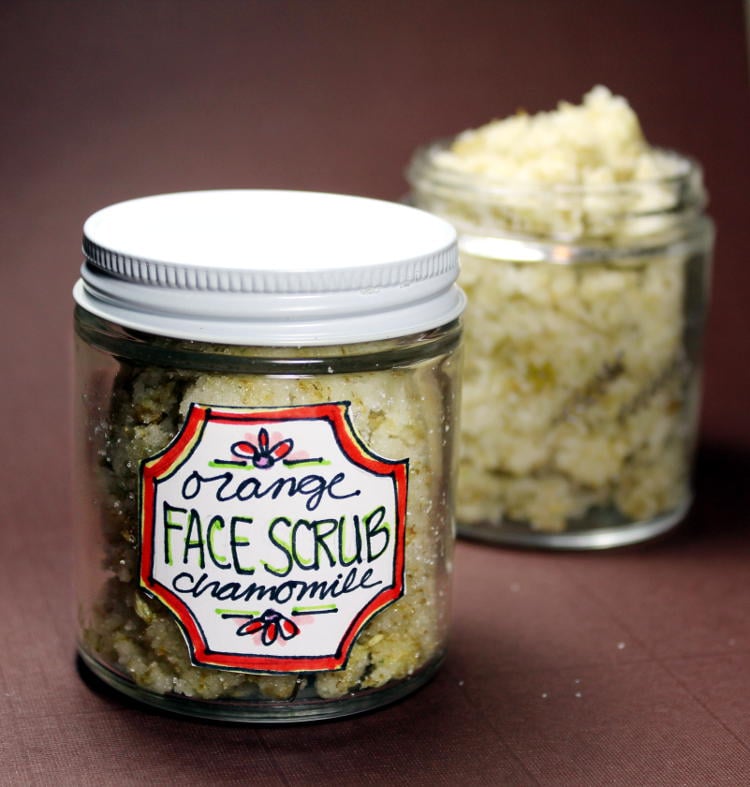
Coconut Oil Facial Soap Recipe for Acne Prone Skin

This coconut oil facial soap recipe for acne prone skin combines ingredients known for their acne fighting properties to help keep skin acne free! Like the name implies, this coconut oil facial soap recipe is formulated using refined coconut oil at 100% with a 20% superfat so it doesn’t over dry skin. Neem oil, sea buckthorn oil and a blend of essential oils are also included in this natural homemade soap recipe to help kick acne to the curb and keep it away. This coconut oil facial soap recipe also makes a great body soap for oily skin.
Coconut Oil Facial Soap Recipe for Acne Prone Skin
© Rebecca D. Dillon
Ingredients:
36 oz. refined (76°F melt point) coconut oil
11.8 oz. distilled water
5.2 oz. lye/sodium hydroxide
1.8 oz. 100% neem oil
1 oz. sea buckthorn oil
.5 oz. lavender flower powder
.25 oz. tea tree oil
.5 oz. lemongrass essential oil
.35 oz. patchouli essential oil
Soap Notes:
Water as % of oils=33%
20% superfat
This coconut oil facial soap recipe is palm free and will yield 10-12 bars of soap approximately 4 oz. each depending on how they are cut. This palm free cold process soap recipe will fit inside my DIY wooden loaf soap mold.
If you are re-sizing this coconut oil facial soap recipe do so with the coconut oil at 100% of the oils as the sea buckthorn and neem oils are not included in the lye calculation. In addition the lye amounts do stay the same if you choose to use unrefined coconut oil instead of refined coconut oil.
Instructions:
To make this palm free coconut oil facial soap recipe, you’ll need to follow your basic cold process soapmaking method instructions. (If you’ve never made cold process soap before here’s a good, inexpensive beginner’s cold process soap recipe.) Be sure to take all proper safety precautions when working with lye including goggles and gloves.
Begin by measuring out the distilled water in fluid ounces. Pour into a heat safe pitcher. Next, using a digital scale weigh out the lye. Slowly pour the lye into the water in a well ventilated area and stir until all the lye has dissolved. Set aside to cool.
Now weigh out the coconut oil using a digital scale in a stainless steel pot. (You may also want to weigh out and heat the neem oil at this time as well, especially in colder temps in which neem oil becomes a semi-solid.) Heat until melted, then remove from heat and set aside. Then weigh out all of the remaining ingredients and set aside.
When the lye-water and soapmaking oils have cooled to around 90°-95°F you’re ready to make soap.
Begin by adding the neem oil, if not previously added to the coconut oil, sea buckthorn oil and lavender flower powder to the melted oil. Mix with a stick blender until evenly distributed.
Now slowly pour the lye-water into the soapmaking oils. Mix with a stick blender until you reach a light trace. Add the essential oils and mix again to fully incorporate the oils and bring to a medium to full trace. Pour into your prepared soap mold and leave uncovered. (This soap gets very hot during saponification and the top will crack if you over insulate it.) Set aside for 24 hours.
After 24 hours your can unmold your homemade soap loaf and cut it into bars. Allow bars to cure 4-6 weeks before use, then wrap and label as desired.
For more of my homemade soap recipes as well as bath and beauty DIY’s, you can follow me on Pinterest for collections. There I share not only my homemade soap recipes and beauty DIY’s but also some of my favorites from around the web. Or, for more palm free cold process soap recipes go here. Alternately you may want to consider one of my activated charcoal soap recipes which also help to prevent acne.
Keep track of all my new homemade soap recipes and other DIY creations by following Soap Deli News blog via Blog Lovin’ . You can also find me on Facebook, Twitter and Instagram.




4 Comments
Scarlette
March 6, 2015 at 4:34 pm
Rebecca,
I am new to the soap making process and I have ordered so far the basics of everything thing I will need to make soap. I wanted to try and make your yogurt soap recipe. My only problem is I am not 100% sure I understand how to use the Lye calculator. I enter in the oils I plan to use and how much and it tells me how much liquid and how much Lye. I want to use goats milk instead of water. Can I still make your recipe but use frozen goat milk instead? will that change the numbers?
Rebecca D. Dillon
March 6, 2015 at 7:05 pm
I don’t recommend goat milk soap as your first soap. You can sub for water in fluid ounces but it has to be slushy cold from the freezer. Are you resizing the recipe? Are you using a lye calc that lets you enter the water discount? What lye calc are you using?
mr.s.m.sabreen
June 10, 2015 at 11:02 am
thank to you recipes.
Rebecca D. Dillon
June 11, 2015 at 9:51 pm
You’re welcome!
Comments are closed.